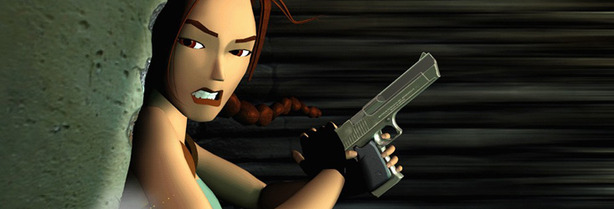
Worms
Developer: Team 17Platform: All of them
Year: 1994
Buy it from Amazon!
Almost the polar opposite of Creative Assembly’s Total War series, Worms caters to a larger, more casually minded audience through its cartoony graphics and accessible design, but that’s no reason to snub it. As well as being incredibly addictive and fun its actually one of the more long running UK game series and still has a sizeable following devoted to it’s caricatured violence.
First released on the Amiga in 1994 before a ton of ports and sequels, Team 17’s artillery title simply tasked two or more teams with destroying each other in a 2D landscape that could be tunnelled through and blown to pieces.
The original version of the game put a modest arsenal at your disposal, ranging from the humble bazooka through to the explosive sheep and fearsome banana bomb and, well, that was it. Throw in some cute, high pitched voices and randomly generated levels and a classic was born.
As time has gone on the series has swelled to at least 15 or so main titles, with numerous ports and mobile versions bolstering that number even higher. Unfortunately, the series arguably lost its way in the early noughties as Team 17 tried to update the retro look of the game with 3D feel – just like Lemmings did. The idea didn’t prove entirely popular though and gamers have always loved the original games first and foremost.
Of the first spurt of releases, three titles stand out. There’s the original classic, obviously, Worms 2, which bought a new look and weapons like the Holy Hand Grenade and Worms Armageddon, which opened the series up to extensive customisation. It’s almost impossible to pick one above the others, so we’ve lazily gone with the first title and decided to let it stand for the series as a whole.
Tomb Raider II
Developer: Core DesignPlatform: PlayStation, PC, Sega Saturn
Year: 1996
Buy it from Play.com!
The varied and much retconned history of Lara Croft isn’t one that should really need summarising, as she’s arguably one of the UK’s most famous and iconic digital exports. Lara is to the Britain as Mario is to Japan, or Duke Nukem is to the US.
While the series is helmed by the American studio Crystal Dynamics nowadays the original games were crafted by Lara’s creators, Derby’s Core Design – and Tomb Raider II was definitely the high point. The original may have introduced Lara as an icon and sex symbol, but the second completely out did it when it came to gameplay. The levels were massive and complex, with new vehicle sections adding to the then astonishing technology. The story and gameplay both kicked it up a notch and combined to blow the top off the sales chart.
Moving the series out of the eponymous tombs that had saturated the original, Tomb Raider II had Lara exploring under the Great Wall of China and along the canals of Venice in search for the Dagger of Xian. Pitted against a fanatical mob boss who wants to turn himself into a dragon, Lara’s second outing was far more colourful and varied than its predecessor and helped cement Lara’s place in videogame history.
Unfortunately, the series quickly went in to decline as Core Design pushed out sequels faster and faster and as the populace grew tired of Lara-mania. Core tried to take Lara back to her roots with games such as The Last Revelation and Chronicles, but they were mostly muddling around the middle ground. All that came to an end when Angel of Darkness debuted and promptly flopped, spelling the beginning of the end for Core Design and a new era for the UK’s leading lady of the games industry.

MSI MPG Velox 100R Chassis Review
October 14 2021 | 15:04











Want to comment? Please log in.